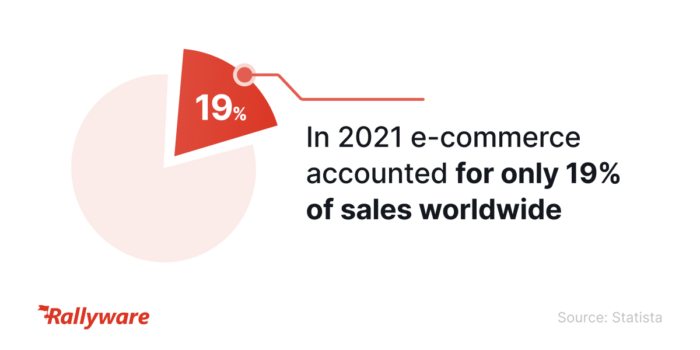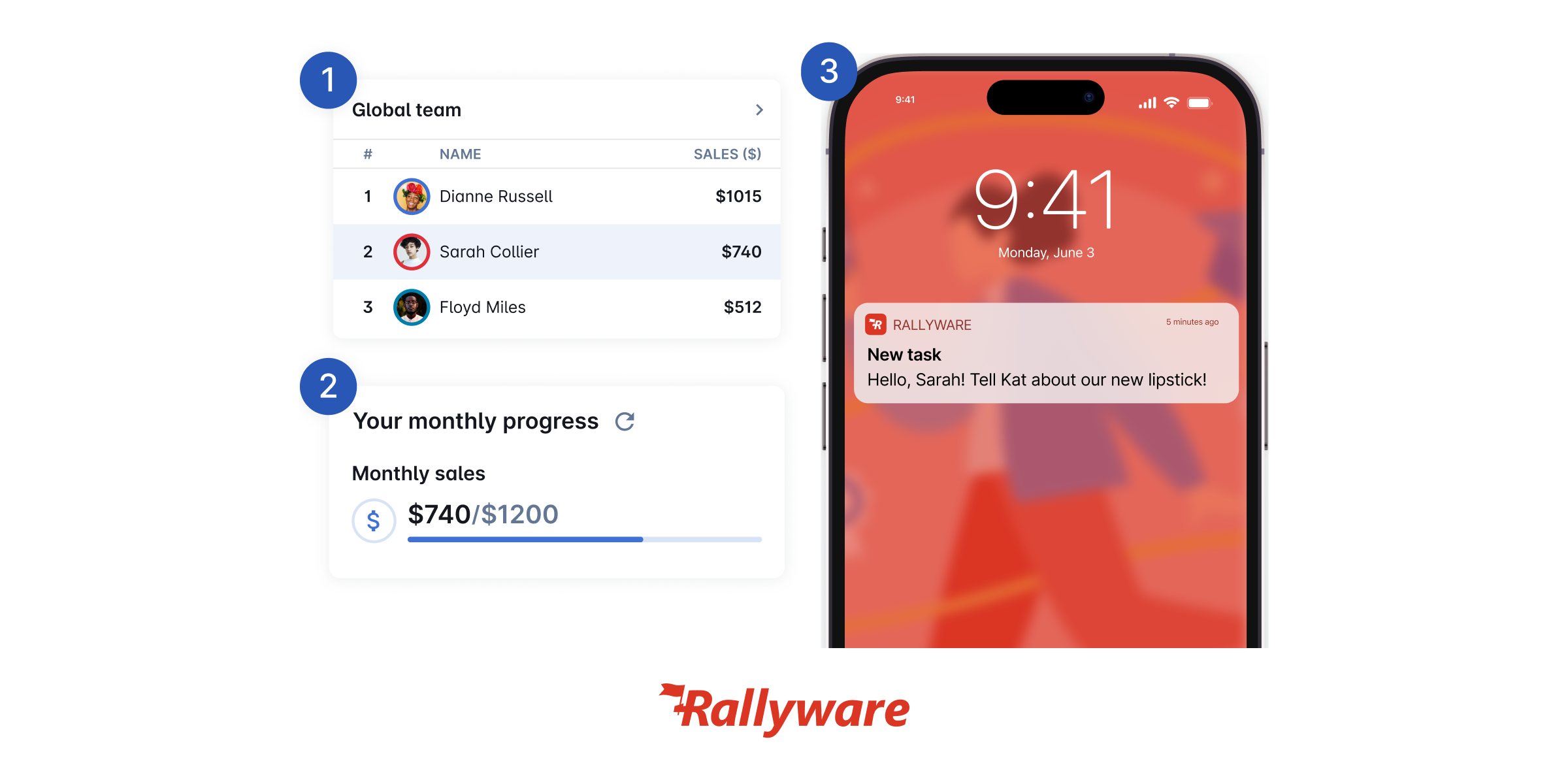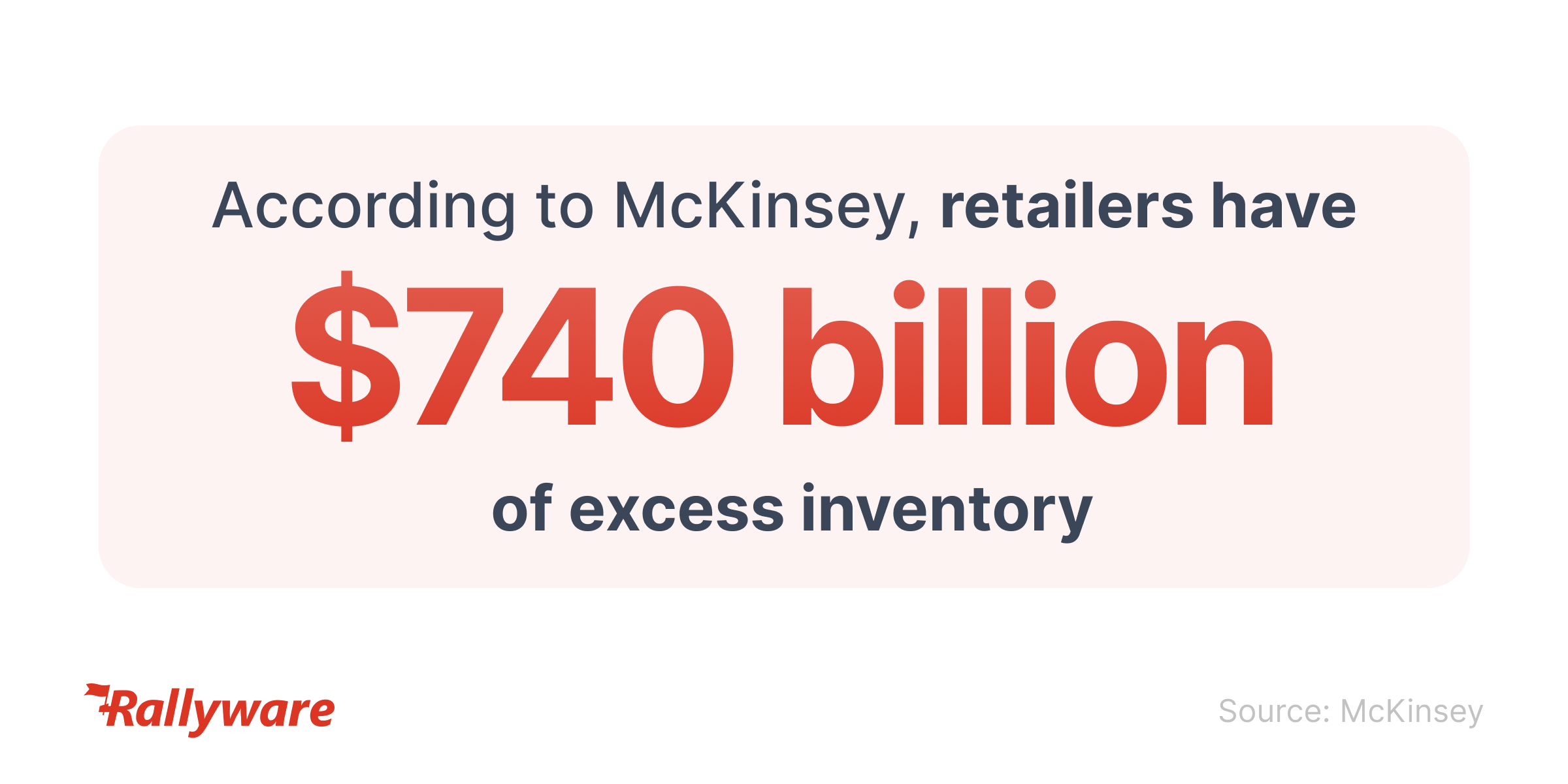3 Best Practices for Consolidating Your Tech Stack to Boost Sales Productivity
Retail Bankruptcies: 10 Ways to Avoid This Fate
Three quarters through 2023, there have been twelve major retail bankruptcies–already three more than in 2022–and while you may not think this is a result of retail employee training, engagement, productivity, and other factors, the truth is complicated. Companies that have filed for Chapter 11 have included:
- Forma Brands
- Party City
- Independent Pet Partners
- Tuesday Morning
- Shoe City
- David’s Bridal
- Bed Bath & Beyond
- Christmas Tree Shops
As you can see, a few of these are even household names: Party City, Bed Bath & Beyond, Tuesday Morning. This doesn’t bode well for the retail industry writ large, whose upcoming trends we previewed recently. Though there are several competing explanations for this trend–consumer slowdown, higher labor costs, intensifying competition and consolidation in various sectors–the relevant question here is what retailers can do to reduce the risk of bankruptcy. While we can’t know the exact causality of this string of bankruptcies, certainly we can assess risks, such as poor retail employee training and subpar sales enablement, and provide buffers against the possibility.
Let’s take a look at some strategies for bankruptcy risk reduction for retailers. This is a risky time, so it’s important to optimize retail employee training and productivity, while adapting your business for survival and growth.
What Is Chapter 11 Bankruptcy? A Refresher
Not everyone can rattle off the definition of Chapter 11 bankruptcy, so let’s do a brief refresher to make sure we have our terminology correct.
Chapter 11 bankruptcy, often referred to as “reorganization bankruptcy,” is a legal process under the United States Bankruptcy Code that allows businesses to restructure their debts and operations while continuing their operations. It is available to both individuals and businesses, but it is commonly used by corporations and large companies.
The primary goal of Chapter 11 bankruptcy is to provide a financially distressed company with an opportunity to reorganize its affairs, reduce its debts, and develop a feasible plan to regain profitability and repay creditors over time. It is typically initiated by the company itself, known as the debtor, by filing a bankruptcy petition with the bankruptcy court.
Here are some key features and processes involved in Chapter 11 bankruptcy:
- Automatic Stay: Once a Chapter 11 bankruptcy petition is filed, an automatic stay goes into effect. This prohibits creditors from taking any further collection actions against the debtor, such as lawsuits, foreclosures, or repossessions. The stay gives the debtor temporary relief and allows them to focus on developing a restructuring plan.
- Debtor-in-Possession (DIP): In Chapter 11 bankruptcy, the debtor retains control of its assets and operations as a debtor-in-possession (DIP). Unlike other bankruptcy chapters where a trustee is appointed to oversee the process, the DIP manages the day-to-day operations of the business while working towards restructuring and reorganizing.
- Development of a Plan: The debtor is required to develop a reorganization plan, which outlines how it intends to restructure its debts, operations, and financial affairs. The plan typically includes provisions for reducing debts, renegotiating contracts, downsizing operations, or seeking additional financing. The plan must be approved by the bankruptcy court and accepted by the creditors.
- Creditors’ Committees: In Chapter 11 bankruptcy, a committee of unsecured creditors may be formed. This committee represents the interests of the creditors and actively participates in the reorganization process. The committee reviews the debtor’s plan, negotiates with the debtor, and provides recommendations to the bankruptcy court.
- Confirmation of the Plan: Once the reorganization plan is developed, it must be presented to the creditors for a vote. The plan requires approval from the creditors holding a majority of the debt owed by the debtor. Additionally, the bankruptcy court must find that the plan is feasible, fair, and in compliance with bankruptcy laws. If approved, the court confirms the plan and it becomes binding on all parties involved.
- Emergence from Bankruptcy: Once the reorganization plan is successfully implemented and all obligations under the plan are fulfilled, the debtor emerges from bankruptcy. The company should be financially stable, with a reduced debt burden and a viable path for future profitability.
Chapter 11 bankruptcy provides businesses with an opportunity to restructure their operations and debts, allowing them to continue operating while addressing financial challenges. It offers a framework for negotiation and cooperation between debtors and creditors, with the goal of preserving value, maximizing creditor recoveries, and facilitating the company’s recovery.
Preventing Bankruptcy for Retailers, from Retail Employee Training to Inventory Management
To prevent bankruptcy and ensure financial stability, retailers can implement several strategies and best practices. Here are some effective ways for retailers to safeguard against bankruptcy:
Strong Financial Management
Maintain accurate and up-to-date financial records, including regular monitoring of cash flow, revenue, expenses, and profitability. Implement robust financial management systems and processes, and seek professional assistance if necessary. Develop a realistic budget and adhere to it, ensuring that expenses are in line with revenue.
Diversify Product Mix and Offerings
Relying heavily on a single product or a narrow range of products increases the risk of financial instability. Retailers should diversify their merchandize mix to appeal to a broader customer base and reduce dependence on a single product line. They should have several different supply chains at once, which increases negotiation power as well. Regularly analyze market trends, identify emerging opportunities, and adapt the product offerings accordingly.
Embrace E-commerce and Omnichannel Strategies
With the growth of online shopping, retailers should have a strong online presence and embrace e-commerce, or online shopping. Develop a user-friendly and secure website, optimize it for mobile devices, and provide seamless and straightforward digital/online shopping experiences. Use smarter retail employee training technology to create in-store associates who are better able to communicate.
Implement omnichannel strategies that integrate online, mobile, and offline channels, enabling customers to shop and interact through various touchpoints. Companies might create their own apps and digitalized reward programs. Or they might seek external partners, which is often more cost effective, with faster rollout times. This might involve the adoption of a sales enablement platform or solution driving in-person sales and retail employee training.
For instance, Rallyware’s 24X ROI performance enablement platform delivers such technology to the retail frontline, smartly enabling sales for store associates across industries. Investing in simple learning and training technology these days won’t cut it. Why use technology to optimize e-commerce operations while leaving in-store untouched? In 2021 e-commerce accounted for only 19% of sales worldwide.

If you’re not using technology to maximize the sales power of the frontline, you’re leaving money on the table.
Customer-centric Approach via Smarter Retail Employee Training
Provide excellent customer service, handle complaints promptly, and leverage customer feedback to improve your offerings. Loyal and satisfied customers are more likely to remain loyal and refer others.
Focus on delivering exceptional customer experiences and building strong relationships. Understand customers’ needs, preferences, and shopping behaviors to offer personalized experiences and relevant products.
Once again, investing in sales enablement technology can help deliver a customer-centric approach. When the frontline has been intelligently trained and guided to become the best salesperson possible, then they can meet customers where they are. They’re ready with product knowledge via personalized learning pathways that have smart triggers based on their past performance. They can even notify previous customers of new products relevant to them, or see how they stack up in sales against their teams, inspiring friendly competition while tracking their personal sales progress.

And because they have a sense of their progress via sales incentives systems, they’re motivated to make sales. Improving WX (workforce experience) also improves CX. Happy customers lead to a happy frontline. It’s a virtuous circle.
Efficient Inventory Management
Optimize inventory levels to minimize carrying costs and reduce the risk of overstocking or stockouts. Utilize inventory management systems to track sales, forecast demand, and streamline replenishment processes. According to McKinsey, retailers have an excess inventory of $740 billion.

Avoid tying up excessive capital in slow-moving or obsolete inventory, and negotiate favorable terms with suppliers to manage cash flow effectively. When you have certain inventory items that need to be moved, technology can certainly come in handy. Your sales enablement tools can automatically motivate the frontline to drive sales for specific items, such as those that need to go. That’s if those tools integrate with frontline performance and back-office data, which Rallyware does.
Cost Control and Efficiency
Continuously review and optimize operational costs without compromising quality or customer service. Identify areas where expenses can be reduced, negotiate favorable terms with vendors, and explore cost-saving measures such as energy-efficient technologies, bulk purchasing, or outsourcing non-core functions. Efficiently manage staffing levels, schedules, and labor costs.
Strategic Marketing and Promotion
Develop effective marketing and promotional strategies to reach and attract customers. Invest in targeted advertising campaigns, social media marketing, search engine optimization (SEO), and other digital marketing techniques. Monitor the ROI of marketing efforts, analyze customer data, and adjust strategies accordingly to optimize results. Creating incentives for the frontline to promote certain products also helps. You can achieve that through sales enablement platforms that include Incentives & Recognition tools.
Continuous Adaptation and Innovation
Stay attuned to market trends, consumer preferences, and industry developments. Be proactive in adapting to changing market conditions, embracing new technologies for retail employee training and enablement, and exploring innovative business models. Regularly assess and enhance the customer experience, stay ahead of competition, and differentiate your brand.
If you’re curious about how innovation can help you adapt, explore sales enablement technology, and in particular performance enablement platforms. The next phase for CX technology is WX (Workforce Experience) technology, as we’ve mentioned–driving inputs for the frontline to scale sales output on a personalized basis.
Build Partnerships and Collaborations
Explore partnerships or collaborations with other retailers, brands, or suppliers to leverage synergies, expand customer reach, and share costs. Joint marketing initiatives, co-branded promotions, or shared distribution networks can enhance efficiency and profitability. Consider building relationships with technology partners as well as you modernize your retail employee training and overall digital strategy.
Seek Professional Advice
If facing financial challenges or uncertain market conditions, consider seeking professional advice from technology partners, financial advisors, or business consultants. They can provide objective insights, help with retail employee training, identify potential risks, and guide you through challenging times.
By implementing these strategies, retailers can strengthen their financial position, adapt to changing market dynamics, and mitigate the risk of bankruptcy. It is crucial to regularly evaluate the business, make informed decisions, and take proactive measures to ensure long-term sustainability and success.
Discover performance enablement technology for our transformed world and workforce. Learn more about Rallyware today.
NOTE: This article does not constitute legal advice.
News and Insights on Workforce Training & Engagement
We’re among top-notch eLearning and business engagement platforms recognized for effective training and talent development, helping to empower distributed workforces
Subscribe
